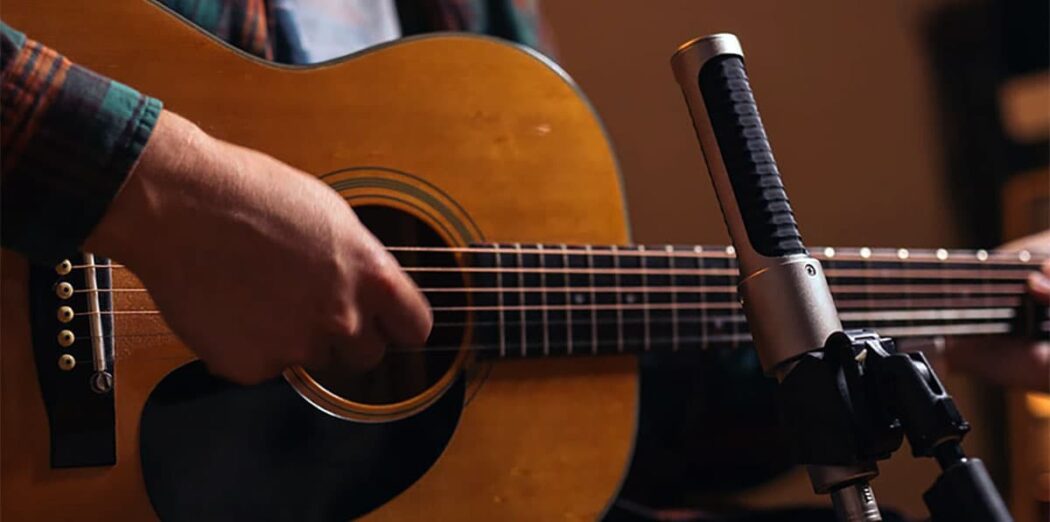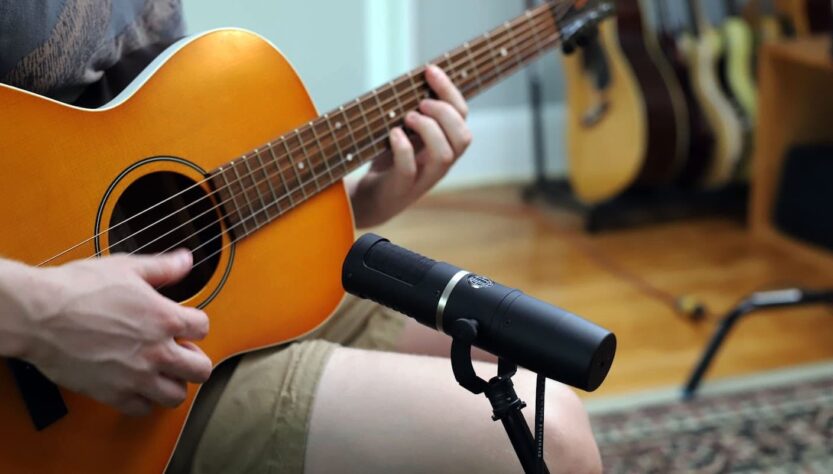Today, I’m pumped to discuss the topic of home recording and, more specifically, the essential gear you need for recording acoustic guitar in your studio. There are many nuances and pitfalls in this matter, which I want to tell you about. So, not everything is as simple as it seems at first glance.
You know, capturing the melodies of your six-stringed companion at home can be an absolute game-changer. Still, it all boils down to having the right tools in your arsenal, like basic (you can’t do it without) and advanced (for professional musicians). So, grab a comfy seat because we’re about to unravel the secrets to making your home studio the ultimate acoustic haven.
Understanding the basics of acoustic guitar recording
Alright, I’m ready to jump into the acoustic guitar recording, which is all about capturing the essence of your six-string beauty.
Firstly, it’s important to appreciate the unique qualities of the instrument. If you want really top-notch recordings, you need to try to capture all the individual characteristics of your instrument.
Remember that where you play your acoustic guitar matters a lot. They are super sensitive to every little sound in your room. So, try to find a calm and quiet spot where it sounds good. Also, I advise considering mic placement. Experimenting with microphone placement can seriously affect the final quality of your recording. So, experiment and try to find the optimal positioning of these components.
And last but not least, you’ve got to choose the right gear. We’ll get into the juicy details in the upcoming sections, but investing in quality microphones, preamps, and audio interfaces designed for acoustic guitars for recording is worth every penny.

Choosing the right microphone
When recording guitar at home, you’ve got options galore. Condenser mics? They’re like the artists’ palette, capturing every delicate nuance and intricate detail of your guitar. But remember, they can be a bit picky regarding room noise, so make sure your recording space is zen-like.
Dynamic mics, on the other hand, are sturdy workhorses. They’ll handle those high-volume strums like a champ, and they’re practically bulletproof. Perfect for rockin’ out without worry.
Here’s the deal: condensers can be pricier, and dynamics might not capture all the subtleties. Got cash to splash? Go for a premium condenser. Pinching pennies? A decent dynamic can do wonders, too.
Recording yourself playing guitar at home is all about finding your groove. So, I recommend experimenting, trusting your ears, and remembering there’s no one-size-fits-all.
Audio interfaces for high-quality sound
You might be wondering why there is fuss about an audio interface. Well, let me spill the beans: a top-notch interface is the secret to transforming your humble mic and acoustic guitar into a dynamic duo, ready to rock your ears. It’s the bridge that lets your soulful strums and vocals soar with pristine clarity.
But don’t break the bank just yet! You don’t need to drop a fortune on these magical boxes. There are some incredible, budget-friendly options out there that pack a punch in the sound department. Your wallet will thank you.
What you should look for when shopping for these audio wizardry gadgets is preamp quality – it’s like the seasoning in your sonic recipe. Low latency is important; you don’t want any awkward delays while laying down those sweet tracks. And connectivity? Well, it’s the highway for your music to travel, so make sure it’s versatile enough to handle all your mic and acoustic guitar dreams.
Acoustic treatment and room considerations
If you’re thinking, “What’s the big deal?” Well, my friends, it’s a HUGE deal when it comes to acoustic guitar recording. See, your room isn’t just where you play your guitar; it’s practically an instrument itself. The way sound bounces off walls, floors, and ceilings can make or break your recording. You don’t want your beautiful fingerpicking masterpiece to sound like it’s trapped in a tin can, right?
Basic acoustic treatment can work wonders. Think diffusers, which scatter sound waves to avoid annoying echoes, and bass traps that gobble up those pesky low-frequency booms. You don’t need to go broke either; there are some nifty DIY solutions out there. Have you ever thought about hanging some heavy curtains or using bookshelves strategically? Make sure you think about it!
Once you’ve tamed your room’s acoustics, your acoustic guitar recordings will sound like a dream.
